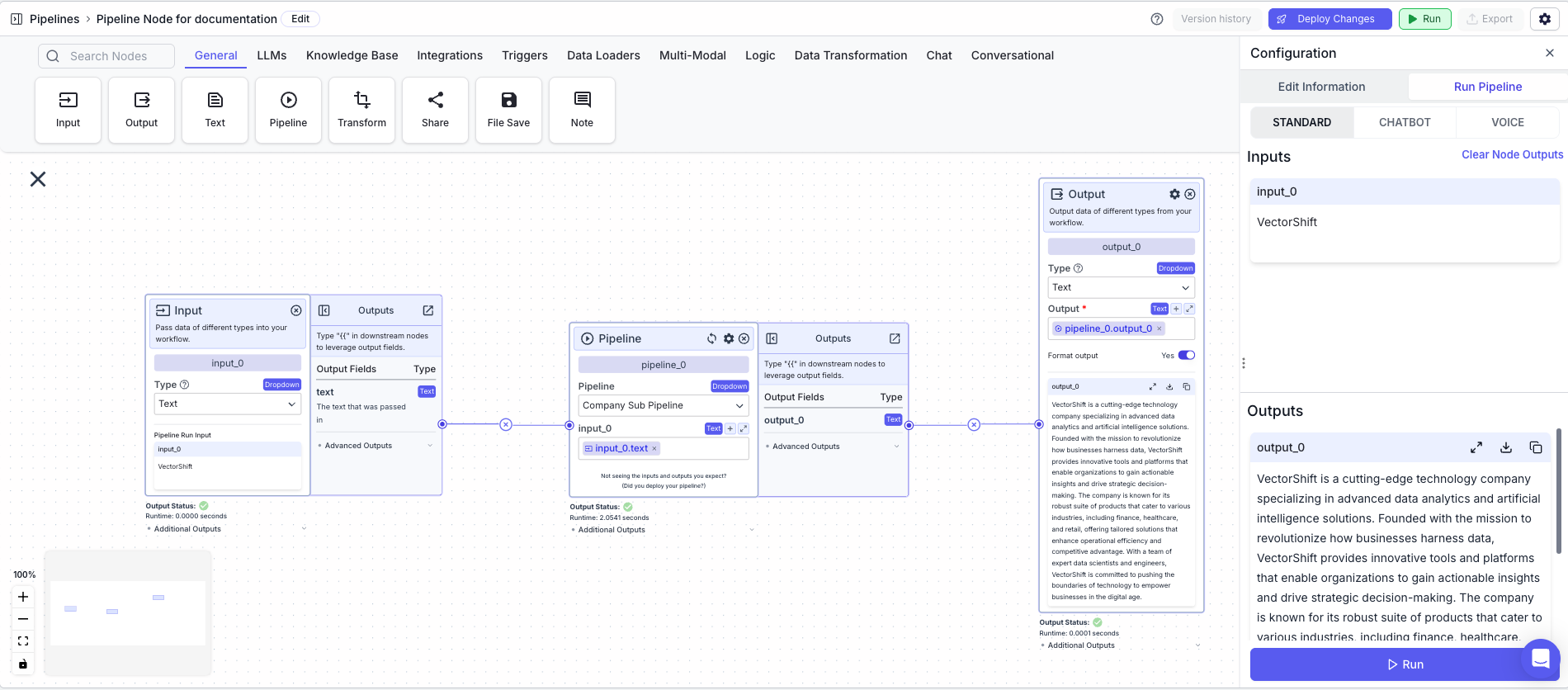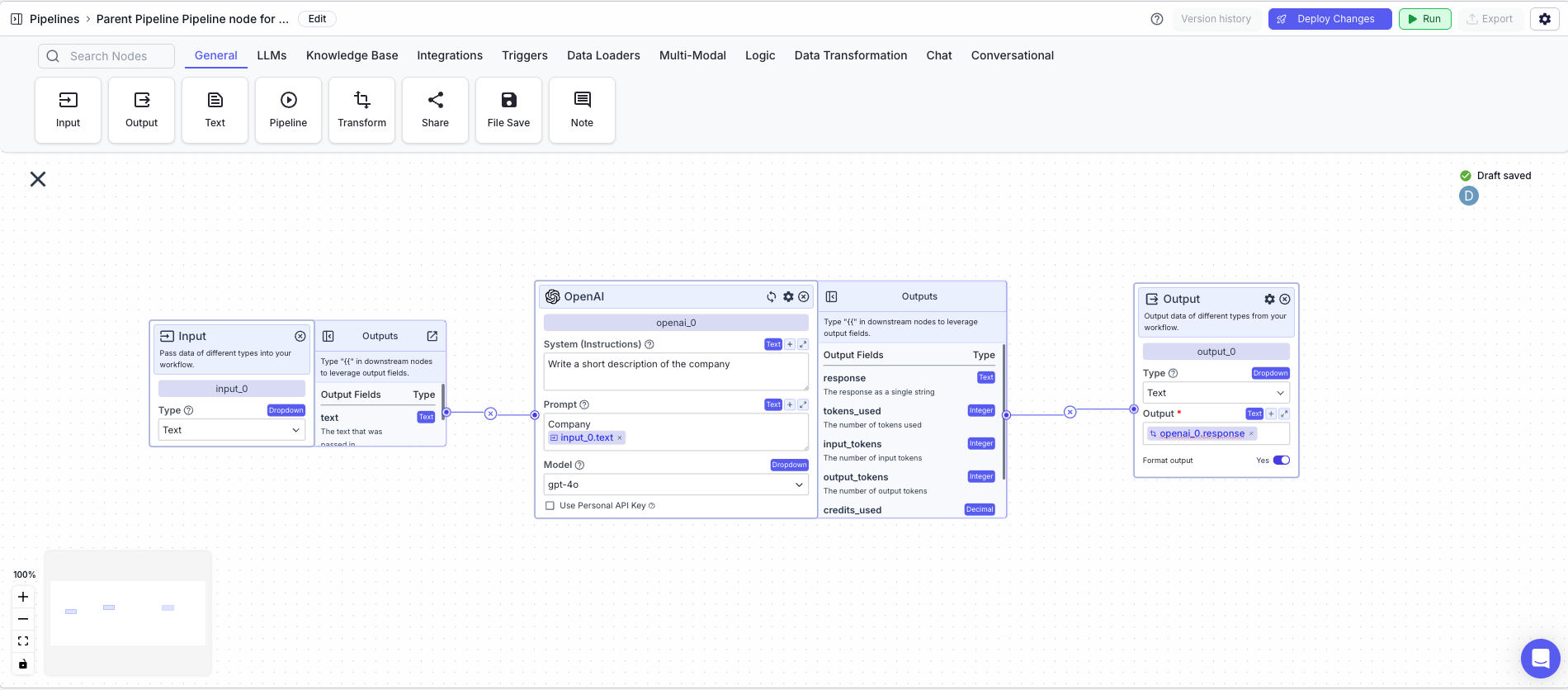 The pipeline node allows you to run other pipelines within your current pipeline.
Use a pipeline node when you want to execute an abstracted workflow (sub-pipeline) as part of your current pipeline.
The pipeline node allows you to run other pipelines within your current pipeline.
Use a pipeline node when you want to execute an abstracted workflow (sub-pipeline) as part of your current pipeline.
Node Inputs
- Pipeline: Select the sub-pipeline to run within your current workflow
- Pipeline-specific inputs: The inputs corresponding to all input nodes within your selected sub-pipeline
- Type: Varies based on input nodes in sub-pipeline
The pipeline node uses the most recent deployed version of your sub-pipeline. Ensure that your sub-pipeline is deployed before using it in the pipeline node.
Node Outputs
- Pipeline specific outputs: Outputs corresponding to the output nodes for your selected sub-pipeline
- Type: Varies based on output nodes in sub-pipeline
- Example usage:
{{pipeline_0.[output_name]}}
Considerations
- Use a pipeline node to execute separately created workflows within your current pipeline. It is especially useful to abstract out complex logic when dealing with large/complex workflows.
- The pipeline node makes the outputs of the sub-pipeline available to use in your current workflow.
- All input nodes in your sub-pipeline will appear as input fields on the pipeline node.
Example
The below example shows a “Parent Pipeline” calling a sub-pipeline, “Company sub-pipeline”. The sub-pipeline takes in the name of a company, and outputs a short description of the company.Parent Pipeline
- Input Node: Allows for the name of a company to be inputted into the pipeline.
- Pipeline Node: Calls the sub-pipeline
- Pipeline:
Company Sub Pipeline
- Pipeline:
- Output Node: Display the output of the sub-pipeline
- Output:
{{pipeline_0.output_0}}
- Output:
 Sub-Pipeline
Sub-Pipeline

